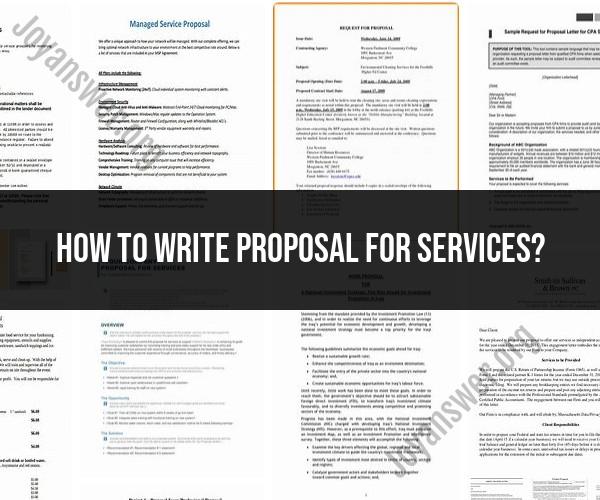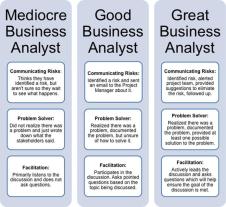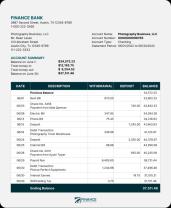How to write proposal for services?
Writing an impactful service proposal is crucial for businesses looking to win contracts and secure new clients. A well-crafted proposal demonstrates your understanding of the client's needs and how your services can meet those needs. Here's a step-by-step guide on how to write a service proposal:
1. Research and Understand the Client:
- Begin by thoroughly researching the client, their industry, and their specific needs. Understand their goals, challenges, and pain points. Tailoring your proposal to their unique situation is key.
2. Title Page:
- Create a professional title page that includes your company's name, logo, contact information, and the proposal's title. Make a strong first impression.
3. Executive Summary:
- Provide a concise summary of the proposal on the first page. Highlight the key points, including the client's needs, your proposed solution, and the benefits of choosing your services.
4. Introduction:
- In the introduction, explain the purpose of the proposal and briefly introduce your company. Mention your qualifications and experience relevant to the client's needs.
5. Problem Statement:
- Clearly outline the client's problem or challenge. Show that you understand their pain points and the reasons they need your services.
6. Proposed Solution:
- Describe in detail how your services will address the client's problem. Explain the methodology, approach, and strategies you will use. Use specific examples and case studies if applicable.
7. Scope of Work:
- Define the scope of your services. Outline the tasks, deliverables, and milestones. Be clear about what is and isn't included in your proposal.
8. Timelines and Deadlines:
- Provide a timeline that outlines the project's phases and deadlines. Clearly indicate the estimated start and end dates.
9. Pricing and Payment Terms:
- Present your pricing structure. Break down costs if necessary, and specify payment terms, such as payment milestones or schedules.
10. Team and Expertise:- Introduce the team members who will work on the project. Highlight their qualifications, experience, and relevant skills. Clients want to know they're working with experts.
11. Benefits and Unique Selling Points (USPs):- Emphasize the benefits the client will gain from choosing your services. Highlight any unique selling points that set your company apart from competitors.
12. Testimonials and Case Studies:- Include client testimonials, case studies, or examples of successful projects to build credibility and demonstrate your track record.
13. Terms and Conditions:- Provide clear terms and conditions related to the project, such as confidentiality agreements, intellectual property rights, and dispute resolution processes.
14. Client Responsibilities:- Outline what you expect from the client in terms of cooperation, communication, and any necessary resources.
15. Call to Action:- Conclude your proposal with a strong call to action. Clearly state what you want the client to do next, whether it's scheduling a meeting, signing a contract, or providing feedback.
16. Contact Information:- Include your contact information and encourage the client to reach out with questions or for further discussions.
17. Formatting and Proofreading:- Pay attention to formatting, design, and overall presentation. Make sure the proposal is error-free and easy to read.
18. Appendices and Attachments:- If necessary, include appendices or attachments, such as additional information, references, or legal documents.
19. Review and Revise:- Before finalizing the proposal, have it reviewed by colleagues or proofreaders to catch any errors or inconsistencies.
20. Delivery and Follow-Up:- Send the proposal to the client through the agreed-upon method (email, mail, or online portal). Follow up with the client to answer questions and discuss the proposal.
Remember that each service proposal should be customized to the client's specific needs and preferences. Tailoring your proposal and addressing the client's pain points directly can significantly increase your chances of winning the contract or project.













